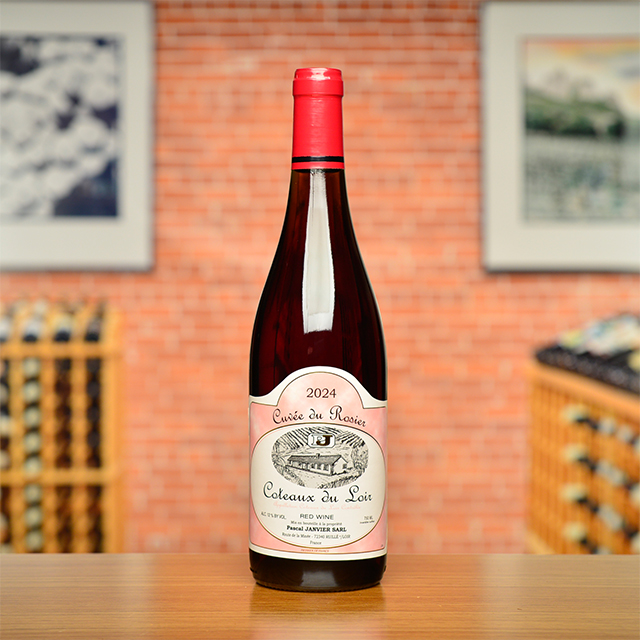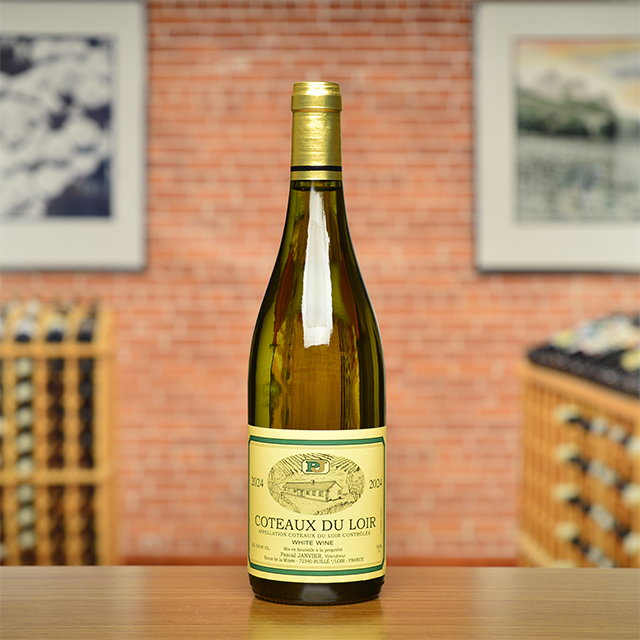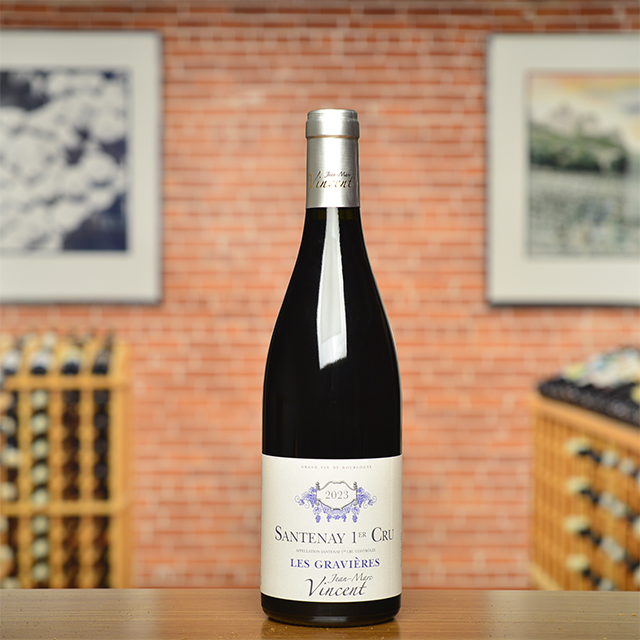Notify me
2020 Jasnières “Cuvée du Silex”
Pascal Janvier
When I was a kid, I loved the way cold swimming pool water smelled when splashed onto the blazing hot pavement. I would lie facedown in the puddle, inhaling the aromas of the steaming wet stone, at least until the surface started to heat up again and I’d have to do another cannonball. I don’t get a chance to do this much anymore, but I can certainly indulge in another iconic summertime practice: sipping a cool glass of Cuvée du Silex from Janvier.
I know now that the wet stone analogy would be a good way to express “minerality” and, short of eating a juicy nectarine while lying beside the pool under a honeysuckle bush, I don’t know how better to describe the flinty beauty of the Silex. This Chenin Blanc has a tart sweetness, or perhaps a sweet tartness—with neither overbearing—that epitomizes good balance and will have you greedily reaching for your glass. Don’t stay on the edge—dive in!
—Jennifer Oakes
| Wine Type: | white |
| Vintage: | 2020 |
| Bottle Size: | 750mL |
| Blend: | Chenin Blanc |
| Appellation: | Coteaux du Loir |
| Country: | France |
| Region: | Loire |
| Producer: | Pascal Janvier |
| Winemaker: | Pascal Janvier |
| Vineyard: | 35 - 40 years, 6 ha |
| Soil: | Clay, Flint, Limestone |
| Aging: | Another racking takes place after fermentation, then the wines age for a few more months before bottling |
| Farming: | Lutte Raisonnée |
| Alcohol: | 13.5% |
More from this Producer or Region

2021 Vin de France Blanc “Chenin Centenaire”
France | Loire
Fermented and aged in barrel and bottled unfiltered, it features a delightful kiss of oak on the long, bracing, mouth-watering finish.

2024 Coteaux du Loir Rouge “Cuvée du Rosier”
France | Loire
This red is 100% Pineau d’Aunis, an indigenous red grape we hold dear because of its mystifying aromatics and bright, juicy texture.

2024 Savennières “Cuvée Spéciale”
France | Loire
Powerful, cellar-worthy dry Chenin aged in chestnut, oak, and acacia.

2024 Coteaux du Loir Blanc
France | Loire
Exotically perfumed with hints of guava, musk, and clove, it finishes dry and quite flinty.

2024 Pouilly-Fumé “Vieilles Vignes”
France | Loire
The classic Sauvignon Blanc characteristics are present, but understated—floral notes, subtle citrus, a cool grassiness—and there’s a chalkiness so textural you can feel it as you taste.

2024 Menetou-Salon Blanc “Le Prieuré”
France | Loire
From a small but mighty appellation boasting an impressive soil loaded with fossilized oyster shells. Peachy, finely textured, and pleasantly verdant.

Vouvray Brut
France | Loire
Made from Chenin Blanc in the Champagne method, this cuvée is the quintessential apéritif sparkling wine, with notes of apple and pear and a fine bead.

2022 Jasnières “Cuvée Sainte Narcisse”
France | Loire
It might be the most unusual and most delicious top-quality sweet wine you have ever tried.

2020 Saumur Champigny “Clos de l’Échelier”
France | Loire
Fine, with bright acid, sleek silkiness, and great length, it is the most elegant of all of Thierry’s red wines.

2024 Jasnières
France | Loire
Racy, slightly honeyed, exotically perfumed, and loaded with minerality, this wine is an excellent representation of how Chenin reacts to the local conditions.
About The Producer
Pascal Janvier
About The Region
Loire

The defining feature of the Loire Valley, not surprisingly, is the Loire River. As the longest river in France, spanning more than 600 miles, this river connects seemingly disparate wine regions. Why else would Sancerre, with its Kimmeridgian limestone terroir be connected to Muscadet, an appellation that is 250 miles away?
Secondary in relevance to the historical, climatic, environmental, and cultural importance of the river are the wines and châteaux of the Jardin de la France. The kings and nobility of France built many hundreds of châteaux in the Loire but wine preceded the arrival of the noblesse and has since out-lived them as well.
Diversity abounds in the Loire. The aforementioned Kimmeridgian limestone of Sancerre is also found in Chablis. Chinon, Bourgueil, and Saumur boast the presence of tuffeau, a type of limestone unique to the Loire that has a yellowish tinge and a chalky texture. Savennières has schist, while Muscadet has volcanic, granite, and serpentinite based soils. In addition to geologic diversity, many, grape varieties are grown there too: Cabernet Franc, Chenin Blanc, Sauvignon Blanc, and Melon de Bourgogne are most prevalent, but (to name a few) Pinot Gris, Grolleau, Pinot Noir, Pineau d’Aunis, and Folle Blanche are also planted. These myriad of viticultural influences leads to the high quality production of every type of wine: red, white, rosé, sparkling, and dessert.
Like the Rhône and Provence, some of Kermit’s first imports came from the Loire, most notably the wines of Charles Joguet and Château d’Epiré—two producers who are featured in Kermit’s book Adventures on the Wine Route and with whom we still work today.
More from Loire or France
2023 Bourgueil “Cuvée Alouettes”
Domaine de la Chanteleuserie France | Loire
2021 Chinon “Le Clos Guillot”
Bernard Baudry France | Loire
2021 Saumur Champigny “La Marginale”
Thierry Germain France | Loire
2022 Chinon Blanc
Bernard Baudry France | Loire
2024 Chinon “Les Granges”
Bernard Baudry France | Loire
2023 Quincy “Vieilles Vignes”
Domaine Trotereau France | Loire
2022 Jasnières “Cuvée Sainte Narcisse”
Pascal Janvier France | Loire
2021 Chinon “Les Varennes du Grand Clos”
Charles Joguet France | Loire
2023 Savennières
Château d’Epiré France | Loire
2020 Bourgueil “Les Perrières”
Catherine & Pierre Breton France | Loire
2021 Bourgueil “La Dilettante”
Catherine & Pierre Breton France | Loire
2024 Bourgueil “Cuvée Alouettes”
Domaine de la Chanteleuserie France | Loire
2023 Bourgueil “Cuvée Alouettes”
Domaine de la Chanteleuserie France | Loire
2021 Chinon “Le Clos Guillot”
Bernard Baudry France | Loire
2021 Saumur Champigny “La Marginale”
Thierry Germain France | Loire
2022 Chinon Blanc
Bernard Baudry France | Loire
2024 Chinon “Les Granges”
Bernard Baudry France | Loire
2023 Quincy “Vieilles Vignes”
Domaine Trotereau France | Loire
2022 Jasnières “Cuvée Sainte Narcisse”
Pascal Janvier France | Loire
2021 Chinon “Les Varennes du Grand Clos”
Charles Joguet France | Loire
2023 Savennières
Château d’Epiré France | Loire
2020 Bourgueil “Les Perrières”
Catherine & Pierre Breton France | Loire
2021 Bourgueil “La Dilettante”
Catherine & Pierre Breton France | Loire
2024 Bourgueil “Cuvée Alouettes”
Domaine de la Chanteleuserie France | Loire
Vintage Chart Mentality

Vintage Chart Mentality
Trust the great winemakers, trust the great vineyards. Your wine merchant might even be trustworthy. In the long run, that vintage strip may be the least important guide to quality on your bottle of wine.—Kermit Lynch
















